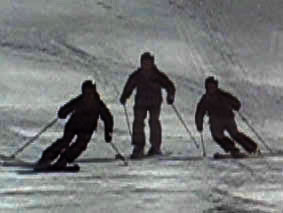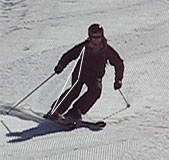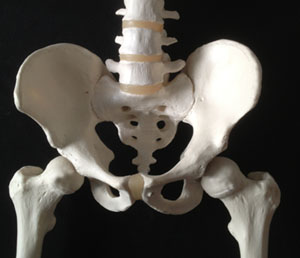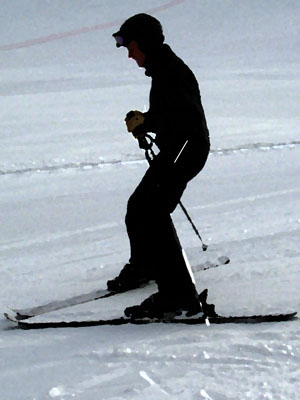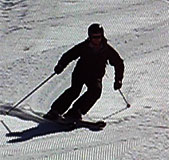Although the word steering covers any of the 3 elements that make a ski turn (pressure, edge, rotation), we are using it to mean rotational steering in this article. In other words, actively turning the ski to change its direction.
We use rotational movements whenever we want the ski to turn quicker than it would using purely carving movements (pressure and edge). Short turns and moguls are two common applications of rotational steering.
Rotational steering is taught early in the learning process, during the snowplough turning phase. And yet many instructors fail to pick up on the differences between two flavours of rotation: foot steering and leg steering.
Foot steering, as the name suggests, involves turning the foot alone – the knee and upper leg move very little. To get a feel for foot steering, stand relaxed on a smooth floor and twist your heels from side to side (you may need to raise your heels slightly to overcome friction). You should notice that each foot and lower leg twists from side to side, but the rest of the leg hardly moves. You get an even better feel for the movement by twisting one foot at a time.
In leg steering by contrast the whole leg is rotated from the hip socket – the knee, lower leg and foot all follow the movement. Again, stand on a smooth floor and move your knee from side to side (you may need to raise the front of your feet slightly to overcome friction). The whole leg – ankle knee and femur – is moving as one unit. Make sure you don’t twist the pelvis (sometimes called hip steering).
So what are the pros and cons? Well, foot steering is a relatively weak movement using small muscles. It has problematic side effects. It can result in over-steering and also you should have noticed when you twisted one foot inwards that it causes tension in the lower back and pushes the hip outwards. The tension causes a blockage in the upper/lower body separation, restricting movement. And the hip push flattens the outside ski, losing edge angle and pressure and causing the ski to skid more. You should also have noticed that turning the outside foot (inwards) is easier than turning the inside foot. This can make it difficult to keep the skis accurately matched with the inside ski often ‘hanging’ and catching.
Leg steering on the other hand uses the big muscles of the upper leg and creates no tension or movement in the hips and pelvis. It also promotes stronger angulation and countering.
Check this out in your own skiing and see if you can feel the difference. If you are an instructor, you may be able to see the residual effects of foot steering in your intermediate groups. When you have a feel for the two different movements on a floor, it should be easy to try them on skis and compare the outcomes. If you’ve had a tendency to over-steer with the feet, you should find that changing to leg steering will produce far more powerful and fluid turns.

